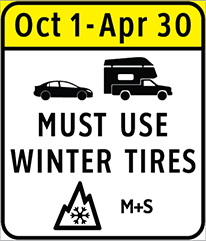The First Snow of 2020!
Ah, the first dusting of snow. I really look forward to it every year, as it paints the landscape in hushed, white flakes. This year, it really was a dusting:
The temperature was hovering just below freezing, and the snow was spectacular. Big, light, fluffy flakes. So light and soft that simply blowing on the car window caused the snow to fall off. Just beautiful.
This was also my first experience in snow with the GLI. I jumped in, lit the engine, and backed out. Barely breathing on the throttle, the traction control flickered and the car slid sideways. "Hmmmm," I thought to myself, "this is going to be a problem."
Our driveway is pretty steep, and sure enough, it was a problem. On the original equipment tires, I couldn't even make it up the driveway. The tire tracks show how far I was able to get:
It was pretty unnerving, as I slid backwards down the driveway and for a few awful moments thought I was going to hit a car that was parked on the street. As usual, a loss of traction equals a loss of control. It reminds of of my favorite Pirelli ad from the 1980s, featuring the great Carl Lewis: Power is nothing without control:
After shoveling off the dusting of snow and sprinkling some salt on the driveway, I was able to make it into the garage. I enjoy the manual labor of shoveling, as it gives me time to focus and clear my mind. In this case, I was focused on was traction. The trail running shoes I was wearing didn't have the traction I needed to shovel, just like the "all season" (3 season?) tires on the GLI were essentially worthless in the snow.
Importance of Traction Rant
The United States has not mandates around the use of winter tires, despite research showing how effective they are at improving traction, and thus control, when it is cold. Traction is improved even more on snowy or icy surfaces. Canada requires winter tires between October and April, and make it known to travelers by posting signs like this:
I suppose in the back of my head, I knew that when I got the GLI I would need to pick up a set of winter tires, but I just kept putting it off. While shoveling and losing my balance, it became clear that I needed to just get a set as soon as possible.
I was also most curious about the performance of the all weather Cooper tires I had put on the grey van earlier in the spring. I can hear you thinking, "All weather tires? Heresy! What is this nonsense!?" I suppose some context makes sense here.
Since 1998, I had been switching summer and winter tire on the Passat. I still remember driving the Passat on summer tires with my brother on 28th street in Cedar Falls, on flat ground, and realizing that it was beyond dangerous to drive on tires like that. We had gone back to Iowa to visit Mom for the weekend when a snowstorm rolled in. I remember looking at each other with the realization that if we tried to drive back to Chicago on summer tires, we would be lucky to make it to Dubuque. The hill into Galena, let alone the twisting two-lane that between Galena and Rockford, would simply not be possible.
That was the first practical realization that tires make all the difference. They are the only thing connecting a vehicle to the road, so what they are made of and how the tread is designed makes all the difference. We left the Passat stranded in Iowa, rolled back to Chicago in Mom's Jeep Grand Cherokee, and promptly ordered a set of winter tires on steel rims.
We returned to Iowa the following weekend to pick up the Passat and were amazed at the difference. From completely incapacitated to capable snow beast, the car had simply been transformed.
I remember a similar experience the first time I drove the Porsche with DOT-legal track tires. They made the relatively softly-sprung 911 feel like a dump truck on the street. The sidewalls were so stiff, you felt everything. Of course, at Blackhawk, the transformation in performance was nothing short of remarkable. It was most apparent cornering, braking, and accelerating, in that order. Suddenly, the 911 turned in immediately. I had been cautioned that the pseudo-race tires were dangerous and unpredictable at the limit. I didn't find that to be the case at all - instead, every aspect of performance was improved. When they were hot, they inspired confidence, and made everything about driving on the track more fun. I thought the breakaway was predictable, though the amount of slip was considerably less. Simply great tires:
Of course, the track tire rabbit hole gets deep pretty quickly, as suddenly a tow vehicle and trailer start to make lots of sense:
So, tires make a big difference, and I've been a season-specific tire advocate for years. However, the advances in tire technology, combined with the near-zero value of the Passat after 21 years, led me to try the Goodyear Assurance WeatherReady. It is an all weather tire that has the gold standard in winter readiness on the sidewall:
The hallowed Three Peak Mountain Snowflake (3PMS) symbol. There is no doubt that an all-weather tire cannot compete with a dedicated winter tire when the road is covered with snow and ice, but I was intrigued by an all-season tire enhanced to earn the 3PMS symbol. I also rationalized that winter seems to have evolved towards cold, without too much snow. In my mind, I could be extra cautious when the snow arrived, making the compromise worth it.
My favorite joke at the time is that I doubled the value of the Passat every time I filled it up, and I ended up ordering a set of Goodyears and couldn't wait for some serious snow.
Unfortunately, we all know how that turned out. I never got the chance to see how they felt on the car in any serious snow.
Before the Passat accident, both the all season and winter tires on the grey van were getting to the point where they needed to be replaced. I decided to keep the grey van to have something to drive until I figured out what to replace the Passat with. While it needed new tires, Goodyear didn't make the Assurance WeatherReady in a size that fit. After some searching, I went with a set of Cooper Discoverer EnduraMax. Unfortunately, it never really snowed last season, so I was unable to assess their snow performance.
Which (finally) bring me back to the first snow of 2020. The GLI was safely in the garage, the driveway was plowed, and the streets were incredibly slippery.
An Abbreviated Comparison Test
With snowy and slippery conditions, I conducted an abbreviated comparison test. I decided on a short route that took me up a slight grade, down a steeper grade, followed by a slight climb and a tight turn around in a cul-de-sac. I designed the turnaround to be my poor-man's skidpad, where I could experiment with front end grip. I was curious to see how much throttle I could use before losing grip.
All-Season Tires
I already knew how the stock GLI tires (Hankook Kinergy GT) were absolutely worthless in the snow. While they deliver pretty impressive grip for an all season in the summer, they were just non-functional based on my treacherous drive home. I couldn't get going after coming to a full stop on an incline, and the front end washed out at a walking pace in my "skidpad" test. I really think we should simply banish the "all season" moniker and call them what they are: three season tires.
Winter Tires
I fired up the blue van an eased down the driveway. This van was riding on Michelin's excellent Latitude X-Ice Xi2 winter tire. As experienced last year, they were superb in a snowstorm and were great all season. Unsurprisingly, they were great in these conditions. The hill start test passed without fanfare. On my cul-de-skidpad, I could circle at a pace similar to my regular driving pace. Color me impressed.
Coming out of the skidpad, I was behind a Porsche Cayenne of a similar vintage as this one. We went through a 90 degree right followed by a 90 degree left. The Cayenne's tail slid out, and not because the driver was trying to have a good time. He was tiptoeing along and still losing traction. Meanwhile, I was able to follow confidently, with the Michelins imparting plenty of confidence and grip. Note to the Cayenne driver - it's not the vehicle that's the problem, it's the tires.
One season in, the Michelins still look like they have plenty of tread left:
This makes sense, as Michelin backs them with a 6 year, 40,000 mile warranty. I remained thrilled with their performance as the second season gets under way, and I feel reassured knowing that my wife and kids are riding on these in the winter.
All-Weather Tires
After driving the winter tire benchmark, I couldn't wait to try the all-weather tires. I fired up the grey van, eased down the driveway, and slipped it into drive. Toeing into the throttle, it was instantly clear that there simply is not as much grip as with winter tires. Not surprising. I stopped the van, shifted into second to reduce torque to the wheels, and tried again. I could get under way, but I needed to use less throttle than with the Michelins. Again, this made sense.
Going down the steep grade, I tried a panic stop. ABS pulsing, the Coopers brought the van to a safe, controlled stop. Again, it took longer than it did on the Michelins, and again, this was not surprising.
Then it was time for the cul-de-skidpad. I circled three or four times, undoubtedly confusing the neighbors. Anyway, I had to go slower than normal, and could get the front end to slide without too much effort.
On the hill start test, I could not get going in drive. I shifted into second and tried again. The traction light flickered, and I couldn't make progress. Turning off traction control gave me the wheelspin I needed to get underway. Not ideal, but I didn't have to back down the hill.
Tire Thoughts
Selection Time
- The ride is nice and smooth. I'm thinking that's as much the taller sidewall as it is the tread design.
- The tires are a little louder than stock, but not intrusively so.
- Cornering and grip felt pretty good.






No comments:
Post a Comment